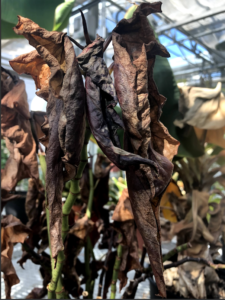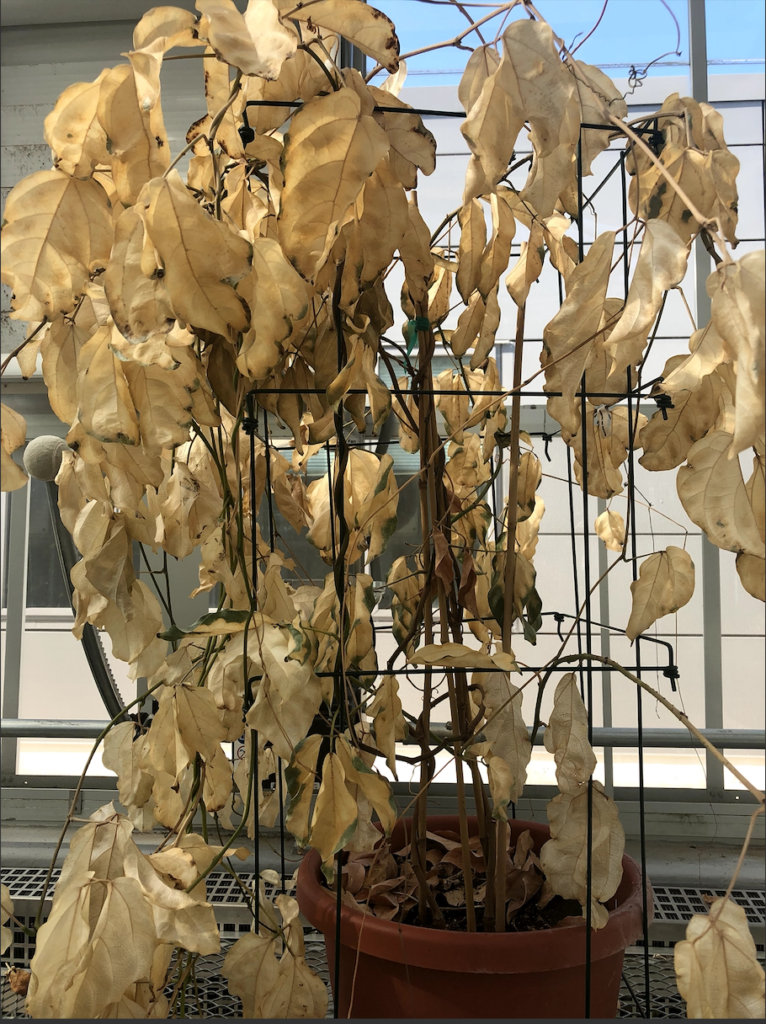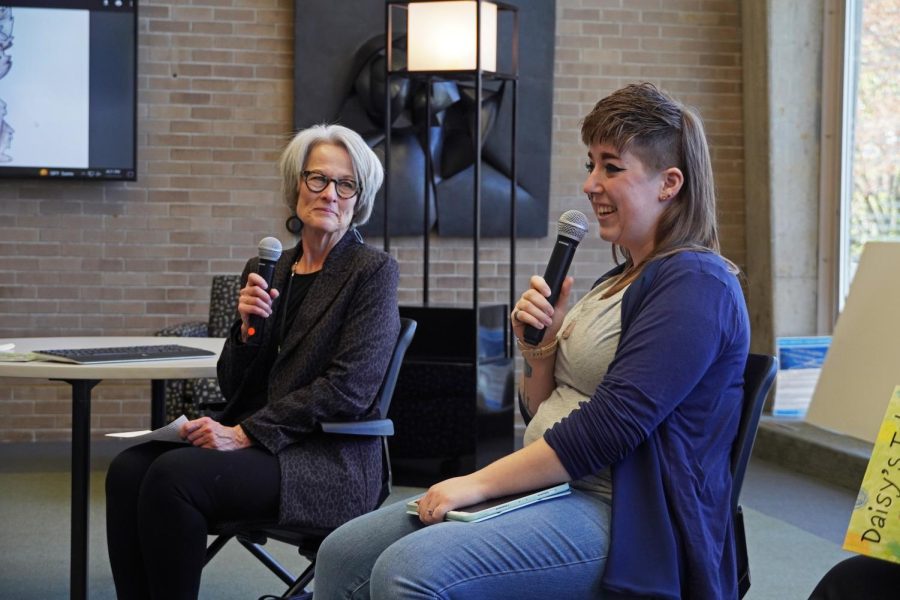Ingrid Meulemans
meuleman@grinnell.edu
Sensitive to even the most minuscule of changes in environmental conditions, damage to the Grinnell College Greenhouse was one of the unexpected, yet devastating, catastrophes caused by the Aug. 10 derecho.
Ashley Millet has been the College’s Greenhouse manager for nine years. Located on top of the Noyce Science Center, the plants growing in the Greenhouse are supported by manufactured special conditions, such as specific levels of heat and humidity and deionized water.
During the derecho, two of the Greenhouse’s windows were shattered, and when the power went out on campus, the Greenhouse, unsupported by a backup generator, started to crumble.
The six days of power outage were a major environmental stressor to the exotic, and sometimes rare, plants in the greenhouse. According to Millet, within the next six days, the temperature inside the Greenhouse rose to almost 150 degrees, killing about 50 plants. The plants that survived had to be watered with untreated city water, which contains harmful salts in many cases.

While Millet was able to take cuttings of many of the plants in order to propagate new growth, some of the plants may be lost permanently. The agave plant, which was first collected in the Amazon by Professor David Campbell, biology, only blooms every five to ten years. The offspring of the original plant—which died several years ago— suffered some damage, but they still seem to be healthy, and Millet is hoping there will be no long-term harm.
“Some of the plants we lost had been in the greenhouse for over ten years growing big and tall,” Millet said. “Most of them I will be able to start again from cuttings, but it’s just sad to see such big plants start all over.”
For now, Millet continues to collect cuttings of the various plants and tend to the ones that survived. For the plants that do not survive, Millet says that the College will purchase new seeds or reach out to peer institutions for donations. Even then, though, the Greenhouse will be essentially starting from scratch.
“It’s going to be a slow process to recover the plants to their old glory, but we will get there,” said Millet. “Some plants survived the heat and have even produced flowers over this last week, and it has helped me feel hopeful for the recovery process.”






























































